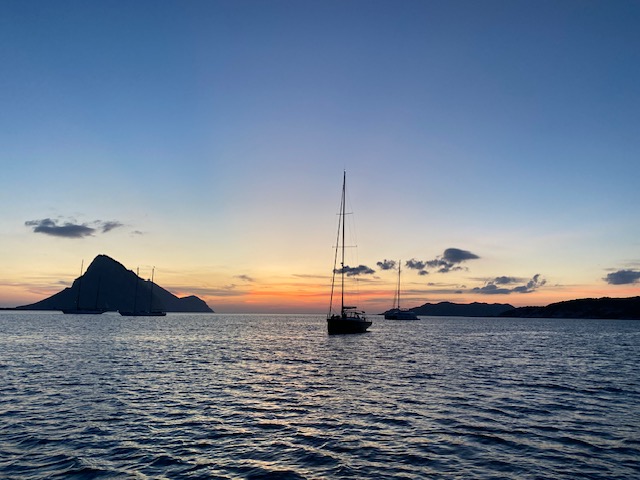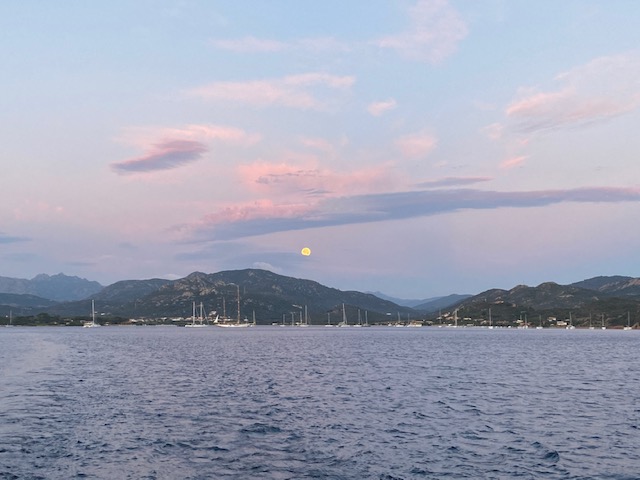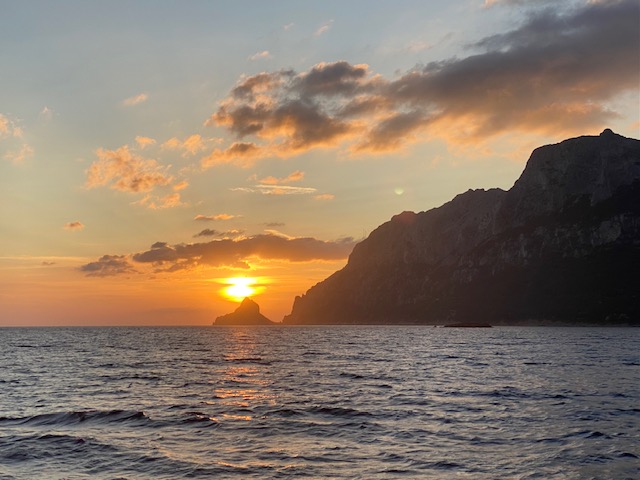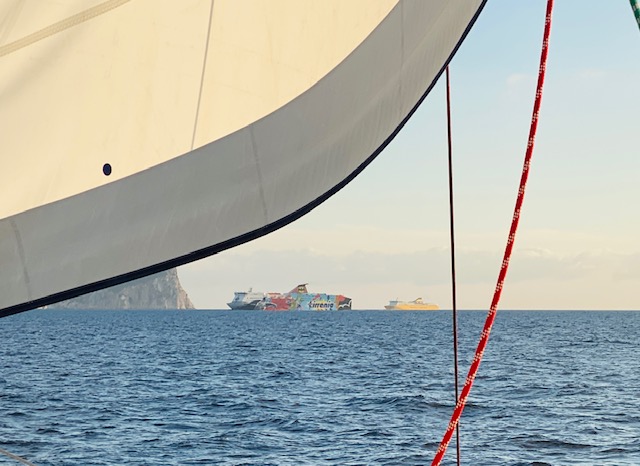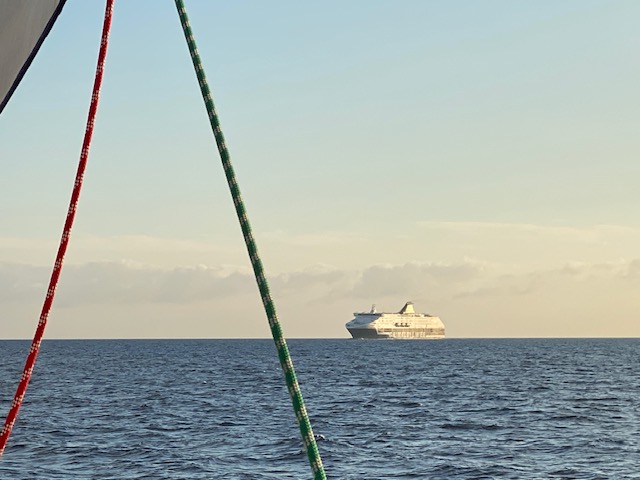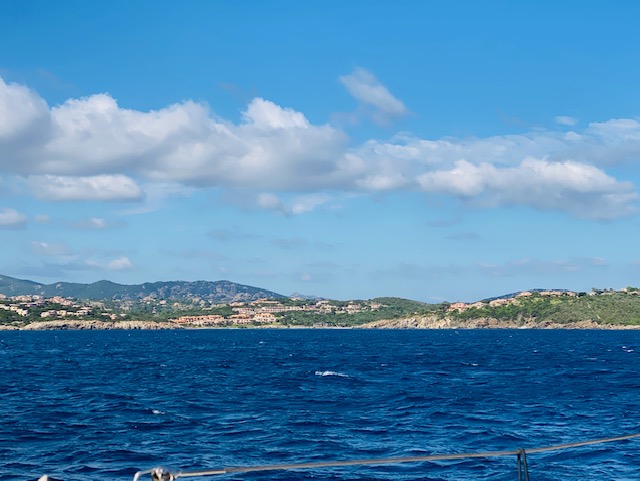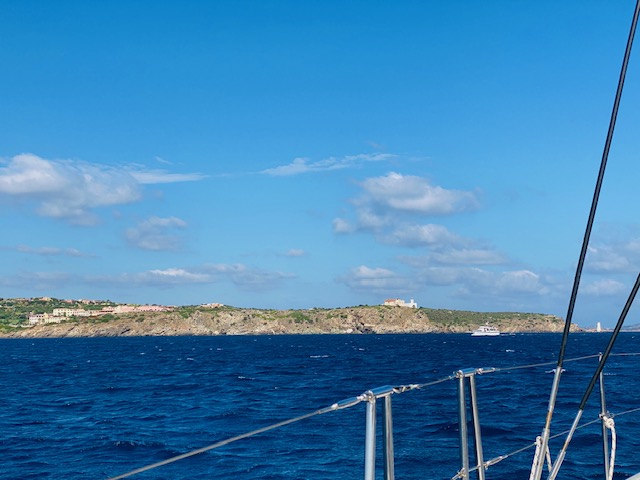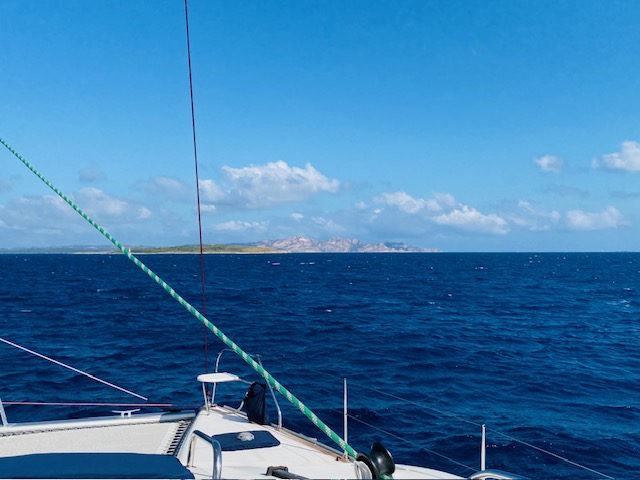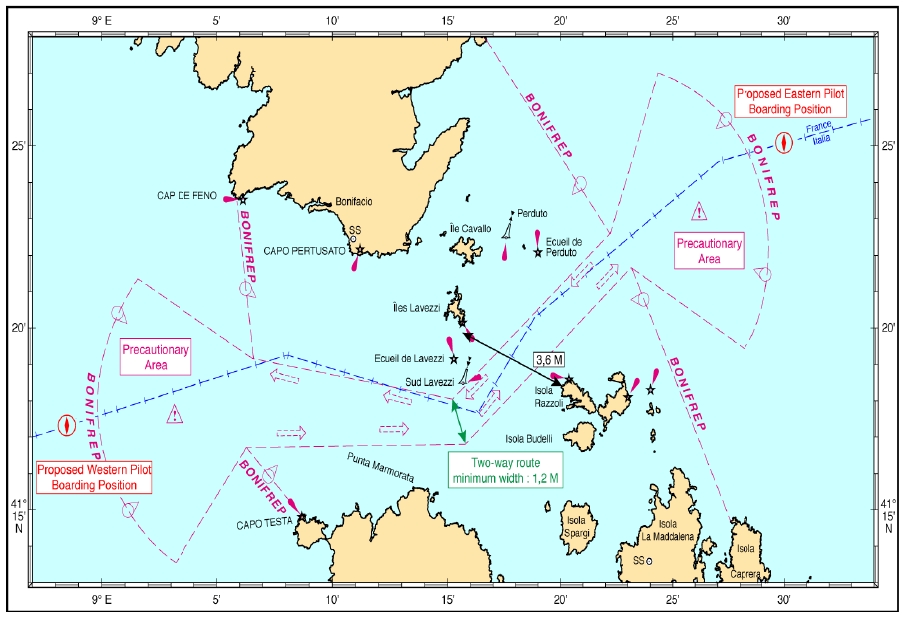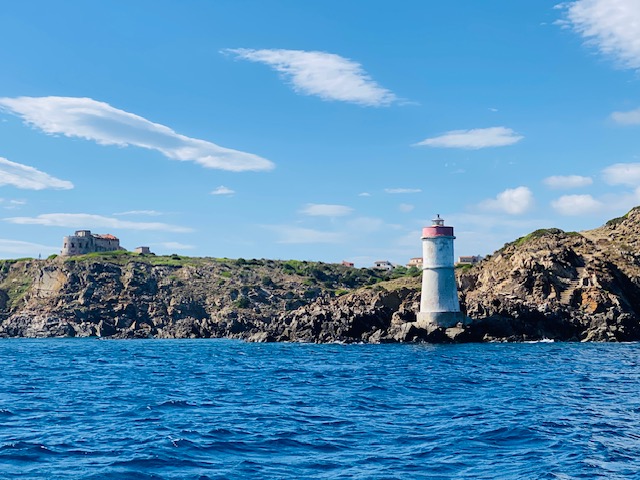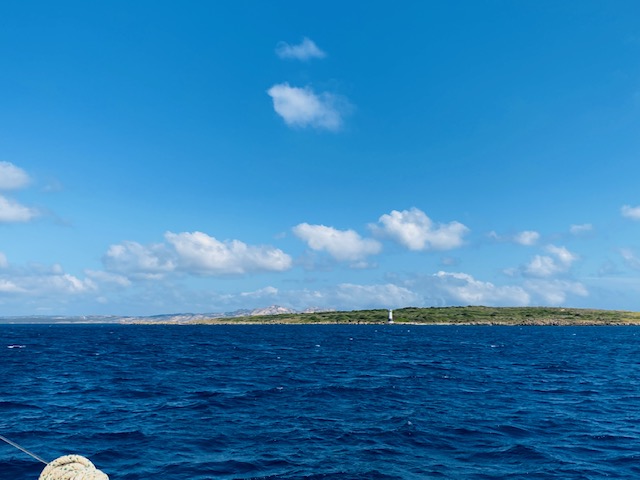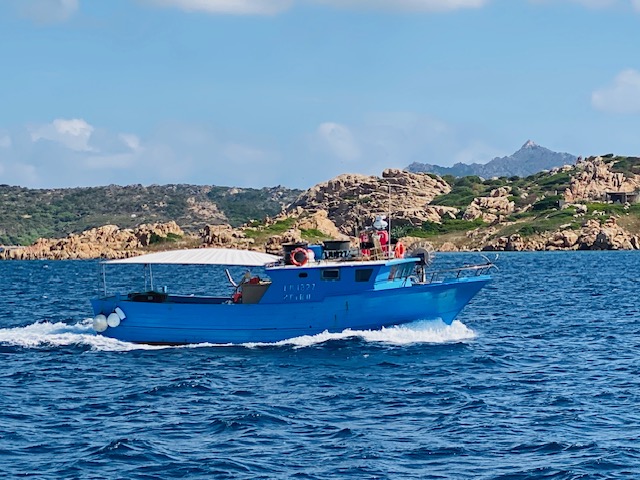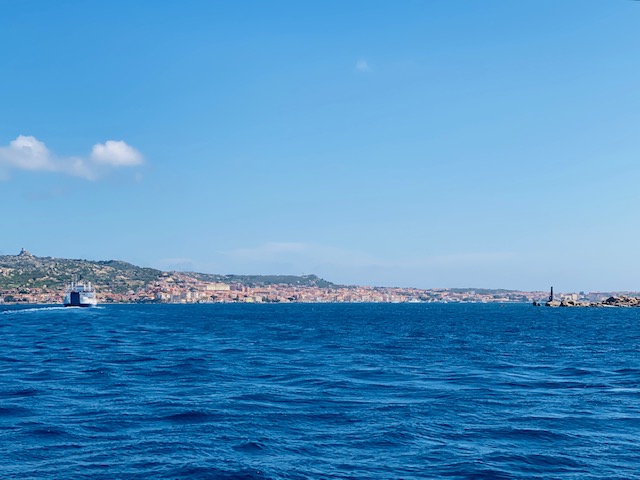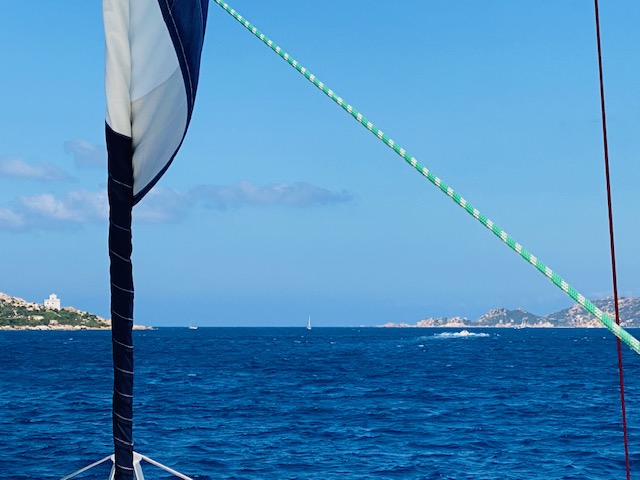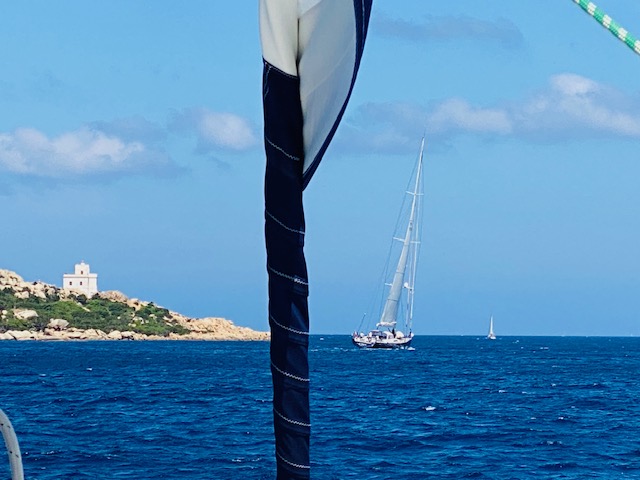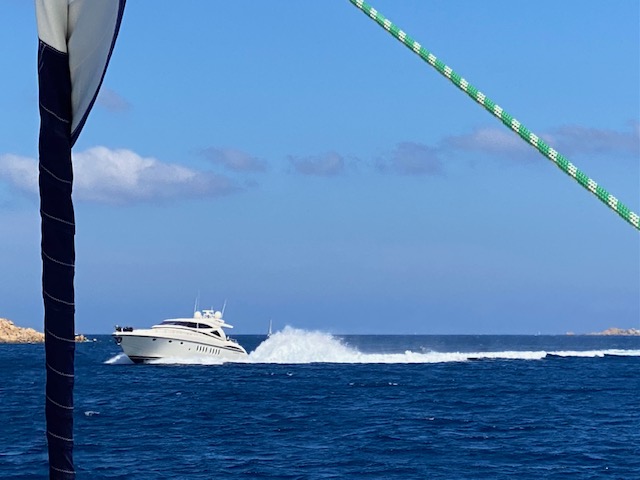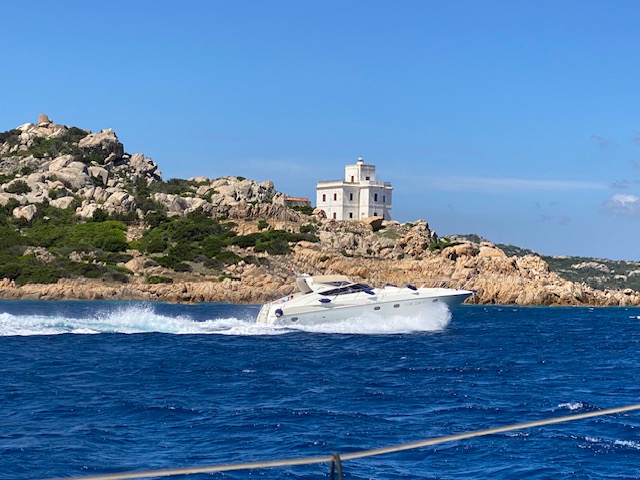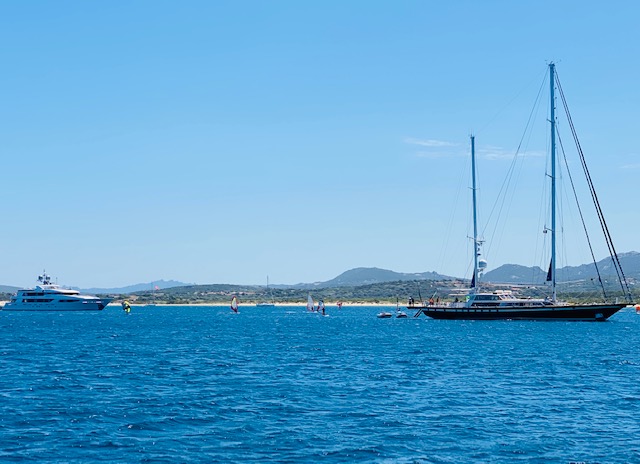We’d already made the decision we would go as far as the weather would permit, but hoped to reach the anchorage just south of the most northern point of Sardinia near Porto Pollo and, thankfully, we did, after a rather rough start, especially as we passed Cape Figari. Strangely enough, though, getting through the strait was the easier and more enjoyable part of the trip, although it was a bit of a maze weaving between Sardinia and all the outer islands that comprise the nature reserve and where yachts are prohibited to go, as well as avoiding all the yachts under sail coming in the opposite direction, all the speedboats and all the ferries. It didn’t help matters either that we were both feeling somewhat sleep deprived after the fiasco we had to deal with in the anchorage last night, coupled with an early rise. However, it was a scenic trip, but quite desolate; we could have been back in Türkiye. We were surprised to see how populated the northern coast was, though, compared to the other areas we’d passed, including some of the outer islands, the latter definitely not expected, given that the area is a nature reserve with many restrictions.
Initially we also had to stop for four large ferries coming over from mainland Italy and all arrived more or less at once to the large commercial port we passed along the way.
The Strait of Bonifacio lies between the French island of Corsica and the Italian island of Sardinia and is home to 40% of all the Mediterranean’s species. The richness of the underwater fauna and variety of rare birds earned it the designation of “International Marine Park” in 2010, the result of a combined initiative of the French and Italian ministries of ecology, making it mainland France’s largest nature reserve. Additionally all French and Italian flagged ships are prohibited from transiting the strait and other internationally flagged ships carrying hazardous cargo have to follow a strict procedure, all in an effort to ensure there isn’t a shipping catastrophe that would pollute and potentially devastate the area, like the grounding of an oil tanker, for instance.
The diversity of the strait comprises 1,745 different species, including 977 species of fauna of which 18 are mammals, 165 birds, 7 reptiles, 2 amphibians, 187 fish, 11 protochordates, 13 echinoderms, 262 insects, 11 arachnids, 6 bryozoans, 103 crustaceans, 143 molluscs, seven annelids, 23 cnidarians and 19 spongarians and we’ll be very impressed if you know what all those are without googling them.
For us, though, we were simply delighted to have safely transited another strait and to be on the move again, heading west and soon southwest. From hereon in our VMG (Velocity Made Good) will increase dramatically, since we’re on the downhill run now, thank goodness!
After dodging all the windsurfers and getting safely anchored, a nice chat to Elaine’s sister, Dianne, followed by dinner, a shower and bed sealed the day.
